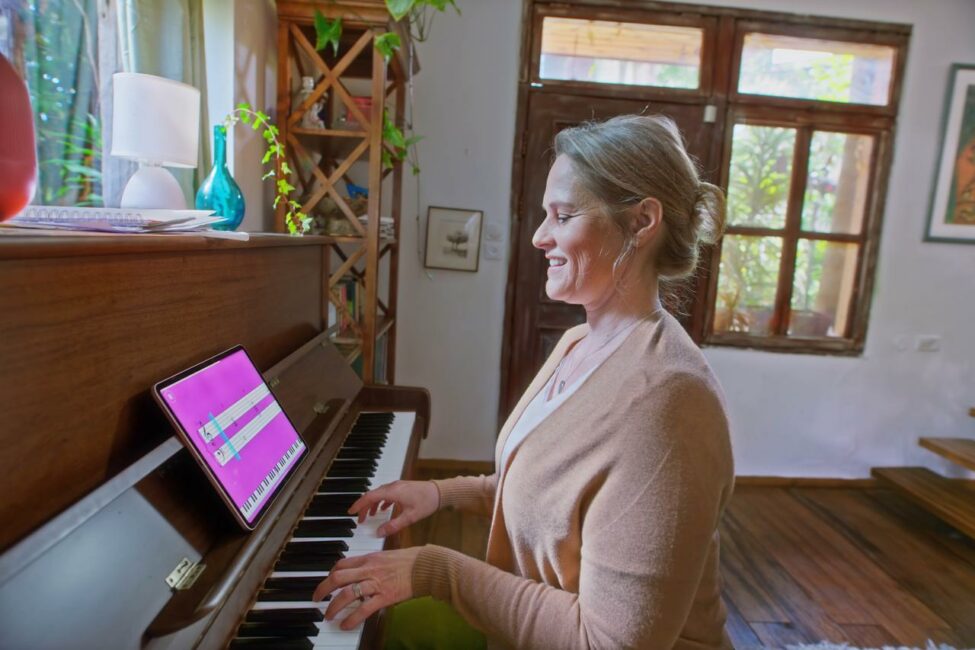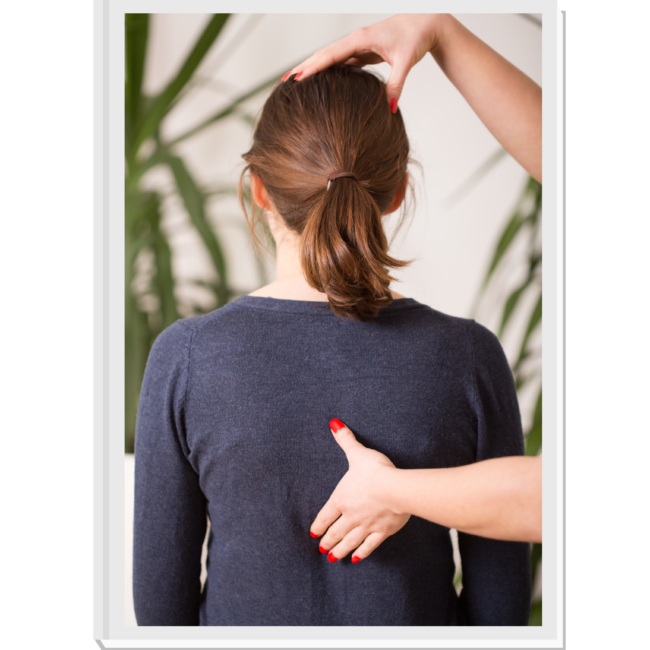Perfect your piano posture as you learn to play

When playing the piano, posture is a vital aspect that a pianist must perfect. Learn how to avoid common mistakes and how to improve your piano posture.
Posture is an interesting topic. It’s not something we give much attention to other than the occasional “yeah, I have terrible posture” conversation, yet it’s crucial to maintain.
Though we may not put the two together right away, sitting with proper form substantially impacts how we play the piano. Sitting comfortably helps you play for longer, with greater control, and improves your general health.
So what is the ideal posture for playing the piano? It’s time to shape up and perfect your posture!
Why is posture important when playing the piano?
Proper posture is essential in everything you do; maintaining it while playing the piano is no exception.
Consider that a piano bench never comes with a backrest. Can you imagine a pianist like Chopin or Beethoven indolently slouching back into an overly plush lazy boy while performing one of their famous masterpieces?
It’s not conducive to playing your instrument and can lead to some form of chronic pain in the future.
Proper posture also helps you sit for extended periods without feeling sore and strengthens your shoulders, back, and abdomen, enabling you to play your instrument more effectively.

What is the proper posture when playing the piano?
People have been studying and playing piano for centuries. Over the ages, they’ve refined how to sit in front of a keyboard and improve their ability to play.
So how do you sit properly? Let’s start with the lower body.
To learn more about the instrument’s history, check out our blog, A Complete Piano History.
Lower body.
The lower body serves as the base for your posture. It’s where your body meets the bench.
Hips
Sit comfortably towards the edge of your stool, keeping your weight over your sit bones (buttocks). Doing this relieves pressure from your lower back and provides greater mobility for your legs.
Feet
Keep your feet flat on the floor when not using the pedals. Your feet serve as an anchor or a point of tension that helps you balance the rest of your body.
Knees
Ensure that your knees are at the proper distance from the keyboard. Your feet should comfortably reach the pedals, and your hands should rest easy on the keyboard. The ideal position for your knees is above your ankles so that they can support your hips and lower back.
If you position your knees well, the rest of your body is in the right place. This gives you access to the instrument while making it easier to sit correctly.
Upper Body.
Arranging your upper body the right way gives your shoulders, elbows, and hands greater mobility and enables you to play your keyboard more effectively.
Neck & spine
Align your neck with your spine and keep your chin gently tucked in. Your ears should also be in line with your shoulders. If you’ve never done this before, it may be challenging to know if you’re doing it right without a mirror. A trick you can use is to imagine the crown of your head pulled upwards by a string.
Softly lengthen your spine. Maintaining a neutral spine reduces the stress on your back, neck, and shoulders.
Shoulders
Keep your shoulders as far as comfortably possible away from your ears.
Many pieces include various dynamics and articulations, and to play them accurately, you need all the versatility you can bring to the keyboard. You channel your weight into your hands more effectively by keeping your shoulders down, helping you apply a softer or firmer touch to your keys.
Part of resting your shoulders in the proper position lies in setting your bench at the right height. To do that, you need to pay attention to your elbows.
Elbows
Your elbows should be around the same height as the keyboard when seated. Your forearms should almost be parallel to the ground, and your elbows at a comfortable distance from your body. In other words, they shouldn’t be over-extending or flaring out to the sides. By positioning your elbows correctly, you should feel comfortable and free.
Wrists
Keep your wrists flexible. Like your shoulders and elbows, your wrists should exert force down into the keys, so position them above the keyboard.
Many musical pieces require you to move your hands a lot. You can press the keys with greater speed, control, and precision by keeping them loose and mobile.
Fingers
Arch your fingers. Your digits (except for the thumb) should maintain a curve. By keeping your digits in an active posture, you can press the keys with more agility, exert force with more control, and play with greater precision.
Most common mistakes.
While assuming proper posture may sound like an easy thing to do, maintaining it can be a challenging experience when you first start.
You may be overzealous with keeping your posture, accentuating specific muscles more than necessary.

Keep in mind that there are natural curves in the body. Therefore, correct posture doesn’t mean sitting perfectly straight. Doing that puts unnecessary tension on the body, possibly resulting in injury.
A proper posture is a balancing act between relaxation and tension.
Final tips.
Posture can be a little confusing when you’re just starting. It can feel unnatural—especially if you’ve been slouching all your life. Be patient with yourself.
Here are a few tips to help you correct your posture safely:
- While maintaining good posture is vital for playing the piano, staying relaxed is also essential. Take a small break if your body is sore or tired.
- Try to maintain proper posture in your day-to-day life. Posture is a habit you can build.
- At first, proper posture may feel unnatural depending on how you’ve been carrying yourself throughout your life. Be patient with your body. In time, sitting with proper posture will become second nature.
- To explain posture, we broke the body down into different parts. However, the body is one organism, one process. So if one piece of your system slacks, it inevitably affects the others.
Ultimately, knowing how to carry yourself changes how you feel and optimizes your motor functions. And learning how to assume proper posture can enrich your experience with the piano.
There are countless avenues to pursue when learning and playing an instrument. Finding the best resource to teach you all those things can be challenging.
Simply Piano offers users many tips and tricks on various subjects surrounding the piano (posture being one of them). The app makes learning the piano fun. It’s a fantastic supplement to piano lessons. You can use it as a primary resource for your piano journey.









